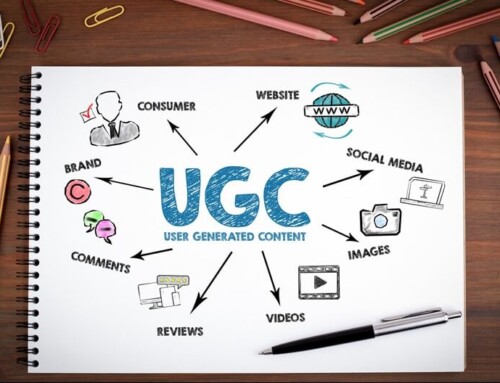- Part One: Marketing Engagement Versus Sales-Ready Conversions
- Part Two: Preventing and Re-Engaging No-Shows
- The final installment of this three-part series discusses how to prevent leads from dropping off and how to close more leads with less effort.
It’s not a secret that today’s buyers are savvy and conduct most of the purchasing process themselves. Eighty-seven percent of buyers self-service part or all of their buying journey. Nearly sixty percent of buyers are ready to purchase without ever speaking to a salesperson. (1)
Time is of the essence to prospects at this stage of the game. Once they are interested enough to reach out, the salesperson must reel them in – and do so quickly. If the sales professional fails to engage the customer, they could end up losing a promising lead. In fact, the odds of qualifying a lead drop by eighty percent after just five minutes. (2)
Far too many leads are lost when they are on the verge of converting. Does this mean that engaging them is extremely difficult – or even impossible? No, it does not!
Guided selling provides salespeople with the resources and tools they need to establish and maintain interest in prospects, ultimately converting them. It does so in the following ways.
Clarifying the Level of Leads
Scoring leads is essential, as discussed in part one of this series. However, scoring is not the only action sales teams must take to save leads. Determining the level of interest of every prospect is essential.
First, it is essential to understand the true meaning of lead qualification. When it comes to leads, the word “qualifying” can be defined differently by different people and various departments within an organization. What does a quality lead entail? For clarity, qualifying leads involves determining whether a lead aligns with the company’s ideal customer profile.
That is a start. Once that is determined, marketing, working in conjunction with sales, assigns the level of interest for each lead. Generally, leads are divided into three categories regarding levels of interest: cold, warm, and hot.
Cold leads have displayed no interest yet. They have not reached out to the business, and they have been unmoved by the company’s efforts to engage them. Their needs are unidentified. While there is always a slim chance of converting cold leads, the chances of doing so are significantly increased unless they are carefully nurtured. Cold leads are, not surprisingly, found at the beginning of the sales cycle. These leads need to have due diligence performed before reaching out to see if there’s a match between the company’s target profile, the lead’s possible needs/pain points, a potential budget alignment, who will be the best people to approach, and why in that organization, and why, etc.
Warm leads enter the sales cycle towards the beginning and have shown a moderate interest in the company’s products or services. Moderate interest is indicated by the lead taking actions such as completing a contact form, subscribing to the organization’s emails, or following its social media profiles. Warm leads engage periodically with the business in these ways and require some nurturing, although significantly less than cold leads. Much like cold leads, warm opportunities require further investigation and analysis. Due diligence can help distinguish between tire kickers and legitimate opportunities. This diligence can also help determine what products or services will be of most interest (and why), who might be competing against an organization for the business (and why), and what other details should be factored into the equation.
Hot leads are fully qualified. They have displayed a high level of interest and offer the best chance of being converted. These leads, fittingly, “come in hot” by showing keen interest in the company’s products and services from the outset. Their needs have been identified. Instead of nurturing, hot leads need the salesperson to mindfully handle and manage them until they reach the end of the sales cycle. While these leads are showing high levels of interest, salespeople must prepare, when possible, for conversations as much as possible. Conduct research on the company and the individuals involved in decision-making, gather financial reports (if the company is publicly traded), and familiarize yourself with the industry and the company’s market. These can be the difference between making a so-so impression and a powerful one, and ultimately winning the business.
Anticipating and Providing to Meet Needs
One purpose automation serves, as discussed in part one, is nurturing leads. Nurturing leads is only half of its job. Automation plays an equally crucial role in anticipating prospects’ needs and providing the right resources and tools to meet them. Companies that meet buyers’ needs during the sales process inspire trust and confidence. Prospects conclude that the business will continue to meet their needs through its products or services.
Internally, automation also helps salespeople. It does so by giving them a guided sales playbook of sorts. This playbook achieves the insights that automation offers. Salespeople can recognize patterns for buyers based on the automated emails their actions trigger. From there, sales professionals can determine each lead’s needs and interest level and address them accordingly.
As discussed in the two previous articles, qualifying leads, gauging their level of interest, engaging them, and meeting their needs through automation are all part of the guided sales process. When leveraged correctly, guided selling provides sales teams with a decisive advantage, enabling them to work their sales pipeline skillfully and achieve great success.
Part One | Part Two | Part Three
Contact Gavel International to be inspired with solutions that connect and engage your people.
____________________________
SOURCES:
- https://www.trustradius.com/vendor-blog/b2b-buying-disconnect-2021
- https://www.vendasta.com/blog/lead-response-time/
This article was last updated on July 18, 2025
- What Real Workplace Flexibility Looks Like – and 8 Tips to Achieve It - September 22, 2025
- Is Your Company’s Career Development Plan Really Working? - August 18, 2025
- Best Places to Find a Food and Drink Oasis in Scottsdale, Arizona - July 28, 2025






